Bali, known for its stunning landscapes and vibrant culture, is home to some of the most remarkable temples in the world. Bali temples, known locally as “Pura,” are sacred sites that offer not only a profound insight into Balinese Hinduism but also breathtaking views and unparalleled cultural experiences. More than just places of worship, these Pura are cultural landmarks embodying the island’s spiritual heritage and architectural grandeur. Each Pura, whether perched on dramatic cliffs, nestled in lush forests, or set amidst tranquil rice paddies, tells a unique story of Bali’s history and religious devotion. In this guide, we explore the 10 Most Famous Temples in Bali, each with its unique charm and significance.
Table of Contents
A Brief History of Bali Temples
The origins of Bali’s temples trace back to the early influx of Hinduism, which began around the 9th century AD. During this period, Hindu priests and scholars arrived from Java, bringing with them sacred texts and religious practices that soon became intertwined with local animist beliefs. Over time, this led to the distinctive form of Balinese Hinduism seen today.
Balinese culture is a beautiful fusion of Hindu and local beliefs, making it a unique and vibrant experience for visitors. By exploring these temples, you not only get to witness the intricate architecture and learn about their cultural significance, but also gain a deeper understanding of the Balinese way of life.
Temples, or “Pura,” were built as places of worship and community gathering, blending indigenous architectural styles with Hindu influences. The Majapahit Empire, which ruled over much of Indonesia in the 13th century, further impacted the island’s religious architecture, inspiring the construction of grand temples. Each temple was integrated into the natural landscape, enhancing Bali’s spiritual connection with the environment. Today, these temples stand as enduring symbols of Bali’s rich cultural and religious heritage.
1. Tanah Lot
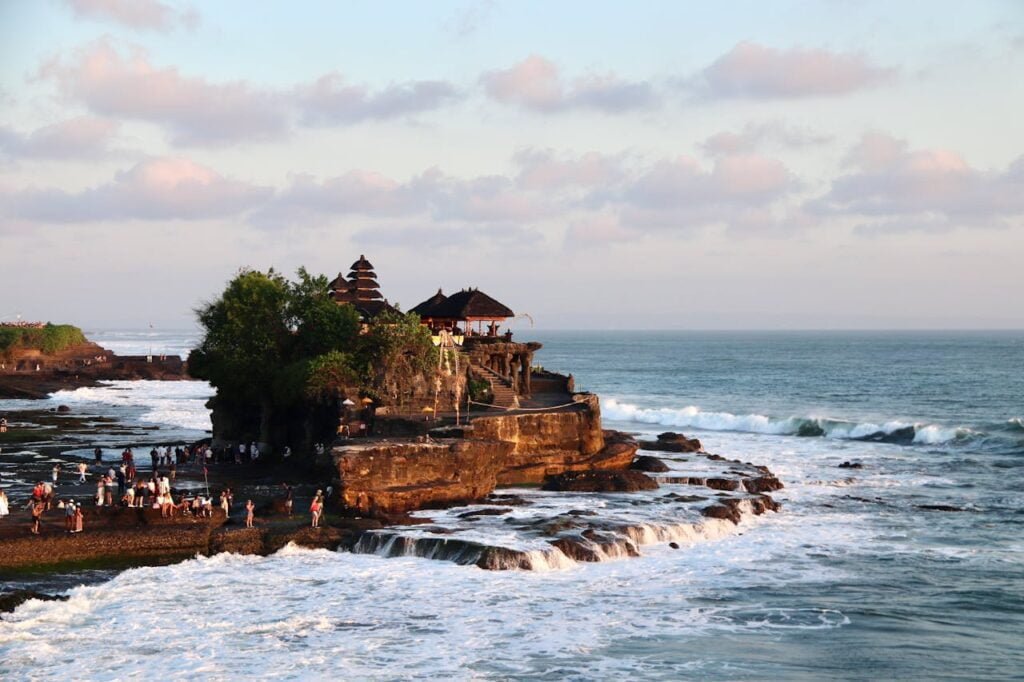
Significance: 16th-century temple dedicated to the sea gods
Location: Tabanan, Bali
Perched on a rock formation in the sea, Tanah Lot is one of Bali’s seven sea temples. This iconic temple is celebrated for its stunning sunset views, where the temple is silhouetted against the vibrant sky. Built in the 16th century, it holds immense spiritual importance and is a must-visit for anyone traveling to Bali.
Cultural Importance:
Tanah Lot is a vital part of Balinese mythology and is believed to be protected by sea snakes. It plays a critical role in Balinese spiritual life.
Visitor Information:
- Best Time to Visit: Sunset
- Dress Code: Modest clothing; sarongs are available for rent
- Entrance Fee: Yes
Personal Experience:
Witnessing the breathtaking sunset at Tanah Lot was a moment that etched itself into my memory. The rhythmic crashing of waves added to the mystical ambiance.
2. Uluwatu Temple
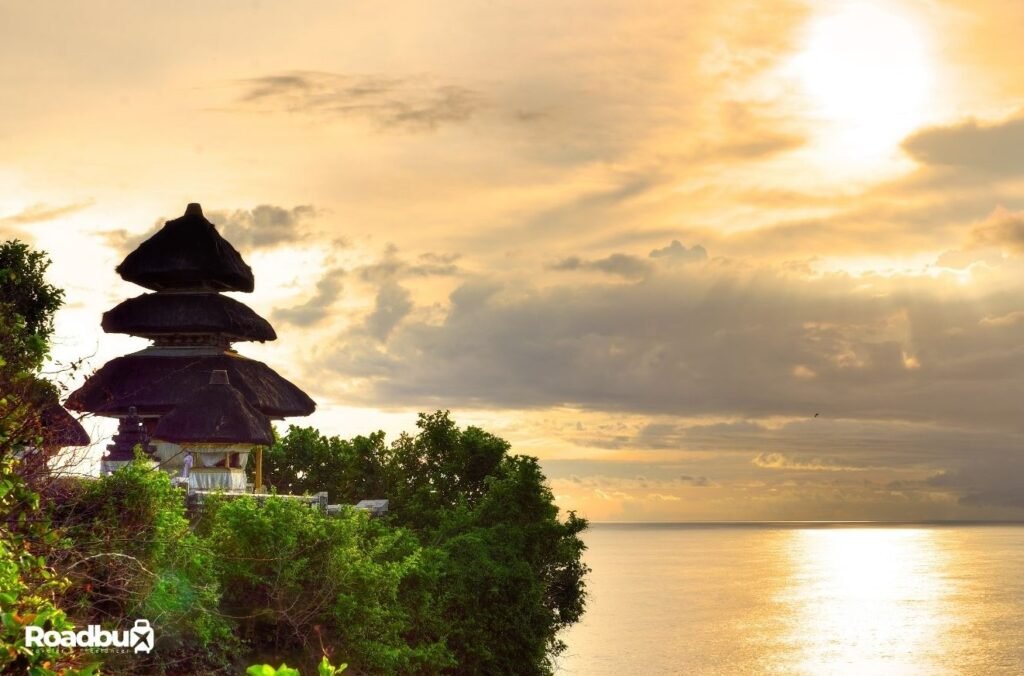
Significance: 10th-century temple on a cliff
Location: Pecatu, Bali
Perched 70 meters above the Indian Ocean, Uluwatu Temple offers panoramic ocean views and is famous for its daily Kecak dance performances. Dating back to the 10th century, it is one of Bali’s six key temples.
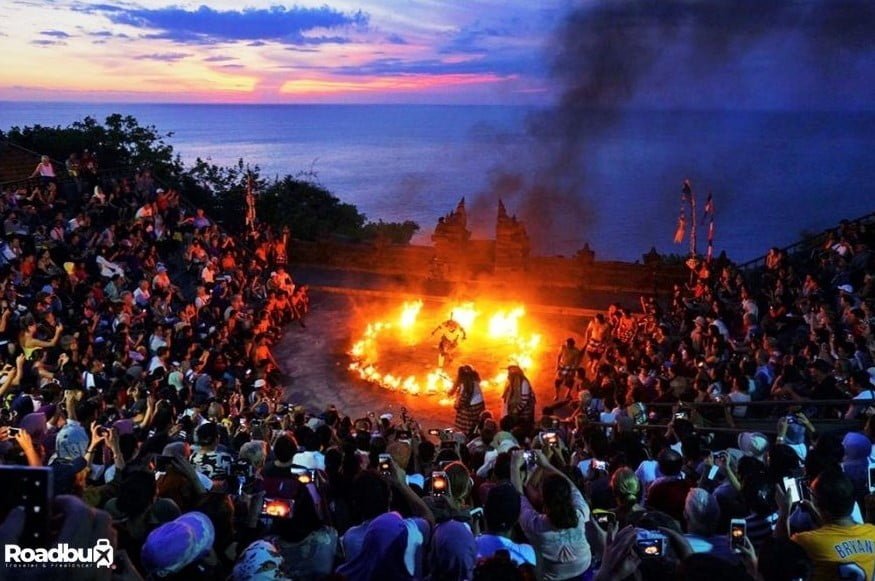
Cultural Importance:
Uluwatu is dedicated to the spirits of the sea and is a significant site for spiritual purification ceremonies.
Visitor Information:
- Best Time to Visit: Late afternoon for the Kecak dance and sunset
- Dress Code: Modest clothing; sarongs and sashes are provided
- Entrance Fee: Yes
Personal Experience:
The Kecak dance performance at Uluwatu Temple was a captivating experience. The open-air setting and the powerful choral music created an unforgettable atmosphere.
3. Besakih Temple
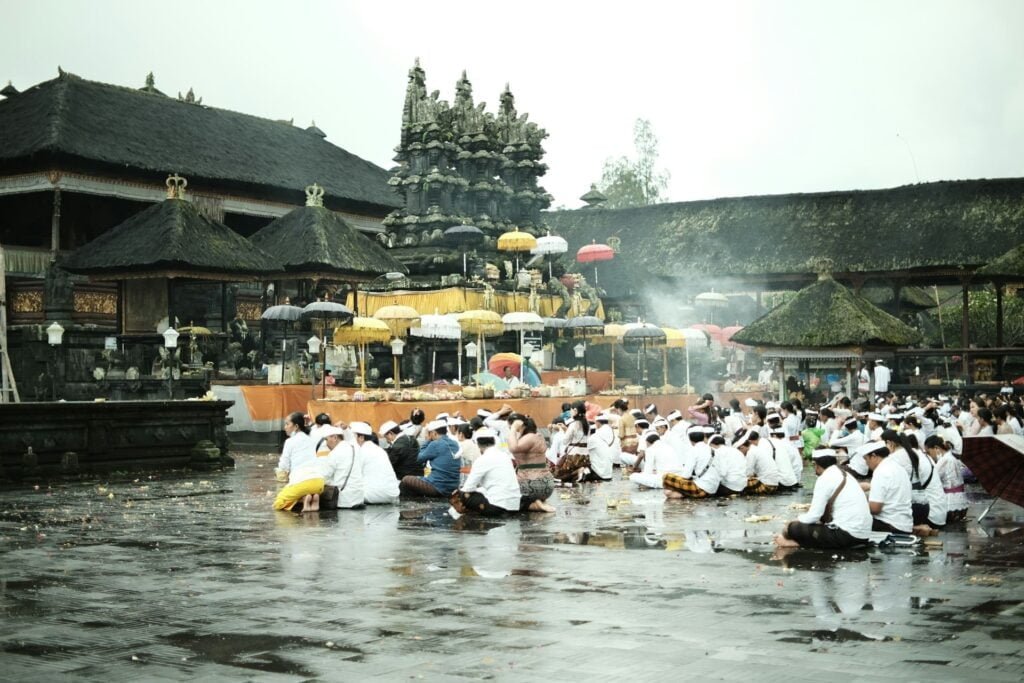
Significance: The “Mother Temple” of Bali
Location: Besakih, Mount Agung
Known as the “Mother Temple of Bali,” Besakih is the largest and most important Hindu temple on the island. With origins dating back to the 8th century, it comprises 23 separate but related temples.

Cultural Importance:
Besakih serves as the central spiritual hub for Balinese Hindus and hosts numerous religious festivals and ceremonies.
Visitor Information:
- Best Time to Visit: During religious festivals for a vibrant experience
- Dress Code: Modest clothing; sarongs are required
- Entrance Fee: Yes
Personal Experience:
Exploring Besakih Temple during a religious festival was awe-inspiring. The colorful processions and collective devotion left a deep impression.
4. Tirta Empul

Significance: Famous for its holy spring water
Location: Tampaksiring, Bali
Built in 962 AD, Tirta Empul is dedicated to Vishnu and is renowned for its holy spring water used in purification rituals. This temple complex attracts visitors seeking spiritual cleansing.
Cultural Importance:
Balinese Hindus believe the water has healing properties, making it a popular site for purification rituals.
Visitor Information:
- Best Time to Visit: Early morning to avoid crowds
- Dress Code: Modest clothing; sarongs and sashes are provided
- Entrance Fee: Yes
Personal Experience:
Participating in the water purification ritual at Tirta Empul was a unique and meaningful experience. The clear holy water and picturesque surroundings added to the spiritual ambiance.
5. Ulun Danu Beratan Temple
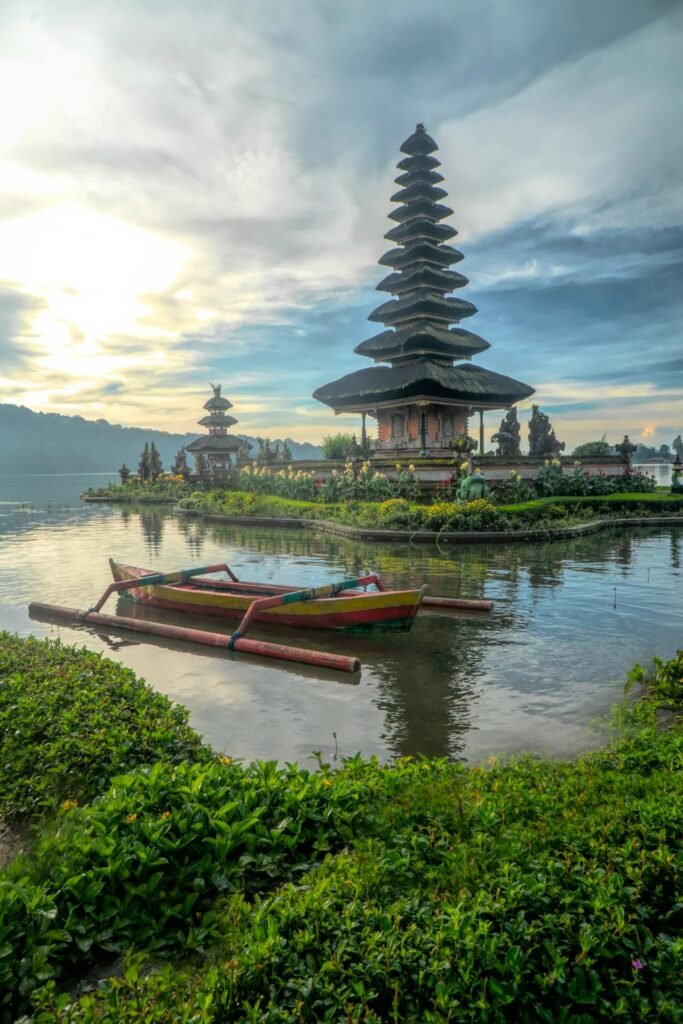
Significance: Stunning temple on Lake Beratan
Location: Bedugul, Bali
Ulun Danu Beratan Temple is one of Bali’s most photographed temples, located on the shores of Lake Beratan. This serene temple complex is dedicated to the water goddess Dewi Danu and offers picturesque views of the surrounding mountains.
Cultural Importance:
Famous for its intricate architecture and peaceful setting, Ulun Danu Beratan is a popular site for offering prayers for prosperity and fertility.
Visitor Information:
- Best Time to Visit: Early morning to avoid crowds
- Dress Code: Modest clothing; sarongs are available for rent
- Entrance Fee: Yes
Personal Experience:
Exploring the complex and taking a traditional wooden boat ride on Lake Beratan was a tranquil experience. The lush greenery and sparkling lake waters were a sight to behold.
6. Goa Gajah Temple
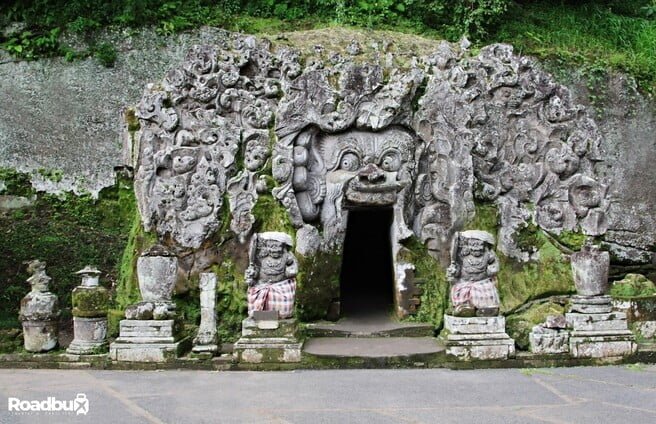
Significance: “Elephant Cave” with ancient carvings
Location: Bedulu, Bali
Dating back to the 9th century, Goa Gajah is an archaeological site with ancient caves and shrines. It gets its name from the stone figures of elephants that guard its entrance.
Cultural Importance:
Goa Gajah holds spiritual significance for both Hindus and Buddhists and is believed to have been a meditation site for monks.
Visitor Information:
- Best Time to Visit: Early morning or late afternoon
- Dress Code: Modest clothing; sarongs and sashes are provided
- Entrance Fee: Yes
Personal Experience:
The intricate carvings and peaceful atmosphere at Goa Gajah were mesmerizing. The ancient history and spiritual importance of the cave added another layer of intrigue.
7. Taman Ayun Temple
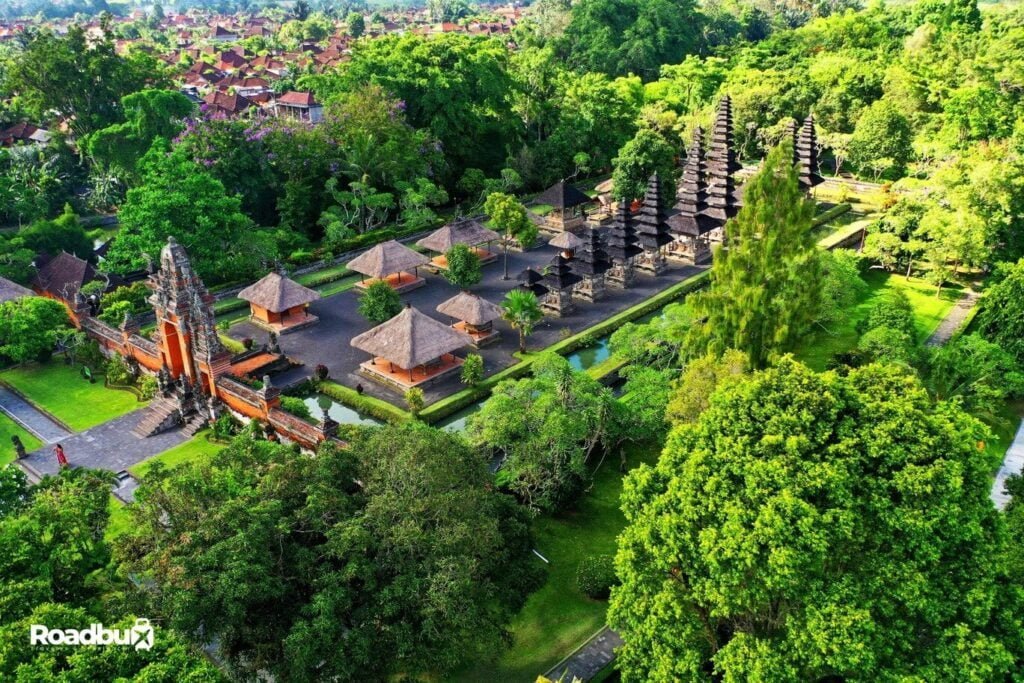
Significance: Royal family temple with lush gardens
Location: Mengwi, Bali
Taman Ayun Temple is a royal temple built in the 17th century by the Mengwi kingdom. Surrounded by lush gardens and lotus ponds, it is known for its impressive architectural features and intricate carvings.
Cultural Importance:
Taman Ayun serves as a place of worship for the royal family and also hosts religious ceremonies and festivals.
Visitor Information:
- Best Time to Visit: Early morning or late afternoon
- Dress Code: Modest clothing; sarongs are available for rent
- Entrance Fee: Yes
Personal Experience:
The tranquil surroundings and stunning architecture at Taman Ayun Temple were a feast for the eyes. The lotus ponds and manicured gardens added to its royal charm.
8. Lempuyang Luhur Temple
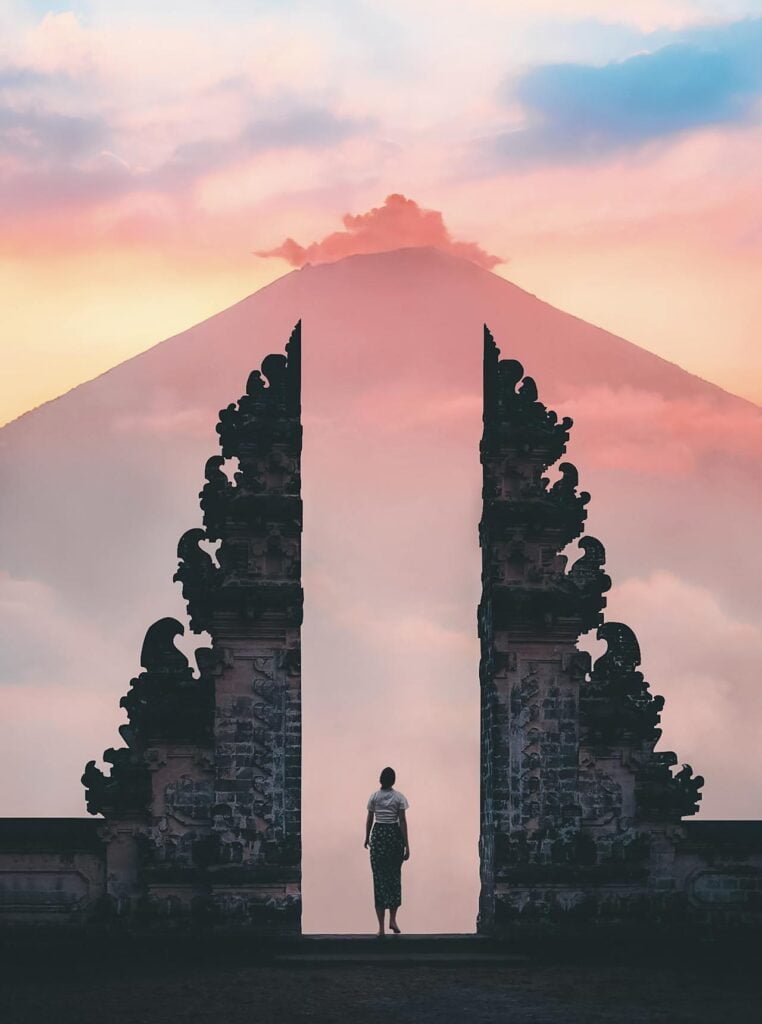
Significance: One of Bali’s most iconic temples
Location: Mount Lempuyang, East Bali
Renowned for its “Gateway to Heaven” backdrop, Lempuyang Luhur Temple is one of Bali’s oldest and most revered temples. The temple complex is situated on the slopes of Mount Lempuyang and requires a challenging hike to fully explore its seven sanctuaries.
Cultural Importance:
Lempuyang Luhur holds a significant place in Balinese Hinduism, symbolizing the strength and spiritual resolve needed to attain enlightenment. It is believed to protect Bali from negative energies.
Visitor Information:
- Best Time to Visit: Early morning for a serene experience and to avoid the heat
- Dress Code: Modest clothing; sarongs and sashes are provided
- Entrance Fee: Yes
Personal Experience:
The journey to Lempuyang Luhur Temple was both physically demanding and spiritually uplifting. Reaching the top rewarded us with breathtaking panoramic views and a profound sense of accomplishment. The “Gateway to Heaven” with its majestic backdrop left an indelible impression.
9. Saraswati Temple
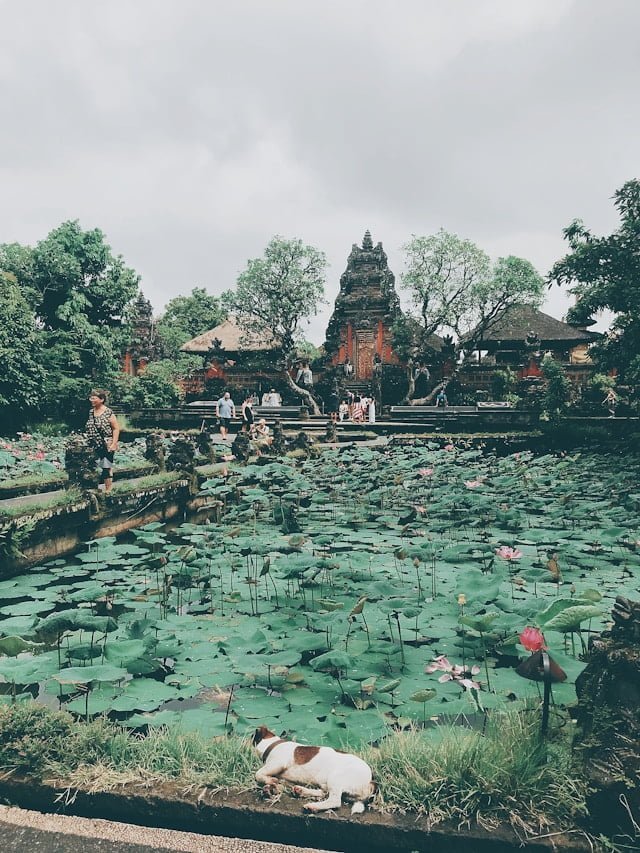
Significance: Dedicated to the Hindu goddess of wisdom and arts, Saraswati
Location: Ubud, Bali
Saraswati Temple, also known as Pura Taman Kemuda Saraswati, is an exquisite temple dedicated to the Hindu goddess Saraswati, the goddess of knowledge, literature, and the arts. Situated in the cultural hub of Ubud, this temple is renowned for its beautiful lotus pond that creates a serene and picturesque setting.
Cultural Importance:
Saraswati Temple plays a crucial role in the spiritual and cultural life of Ubud, hosting regular dance performances and cultural events. The intricate carvings and statues found throughout the temple depict stories from Hindu mythology, offering visitors a glimpse into the rich cultural heritage of Bali.
Visitor Information:
- Best Time to Visit: In the evening to enjoy traditional dance performances
- Dress Code: Modest clothing; sarongs and sashes are provided
- Entrance Fee: No
Personal Experience:
Walking through the lush gardens and sitting by the lotus pond at Saraswati Temple provided a calming and reflective experience. Watching a traditional Balinese dance performance against the backdrop of the temple illuminated in the night was both enchanting and culturally enriching.
10. Goa Lawah Klungkung
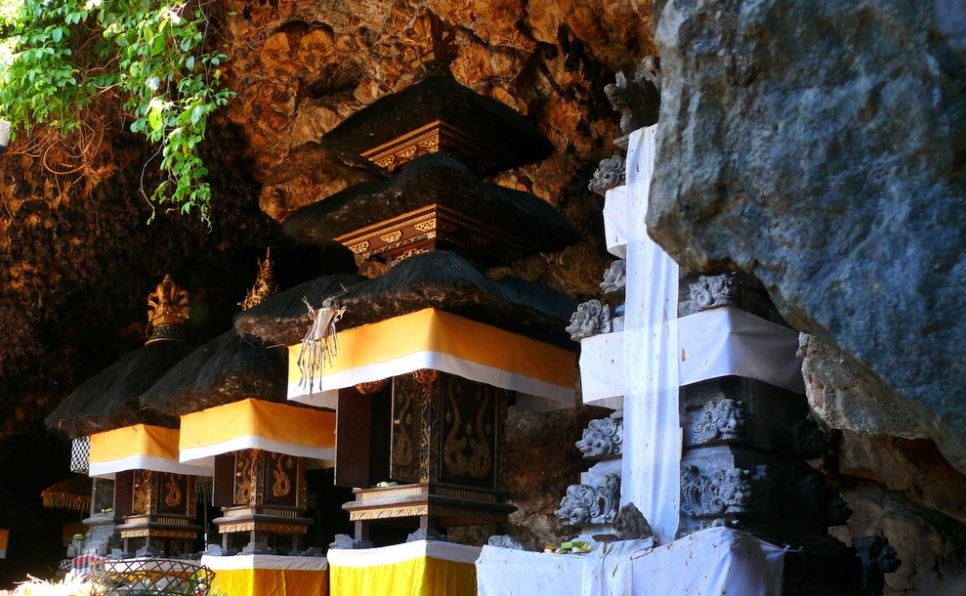
Significance: “Bat Cave” with a sacred temple
Location: Klungkung, Bali
Goa Lawah, also known as the “Bat Cave Temple,” is one of Bali’s most fascinating temples. It is located in Klungkung and is named after the thousands of bats that inhabit the cave. The temple is an integral part of the island’s cultural and spiritual landscape, believed to be over a thousand years old.
Cultural Importance:
Goa Lawah holds immense significance in Balinese Hinduism. It is considered one of the key temples in Bali’s island-wide temple network due to its connection with the sea and the mountain. The temple is often visited during important religious ceremonies, and it is believed that the cave extends all the way to the base of Mount Agung.
Visitor Information:
- Best Time to Visit: Early morning or late afternoon to see the bats both resting and flying
- Dress Code: Modest clothing; sarongs and sashes are provided
- Entrance Fee: Yes
Personal Experience:
Visiting Goa Lawah was a unique and memorable experience. The sight of thousands of bats hanging from the cave’s ceiling was both eerie and awe-inspiring. The temple’s serene ambiance and historic significance provided a profound sense of connection to Bali’s spiritual traditions.
Tips for Visiting Bali Temples
Exploring Bali’s temples can be a deeply enriching experience, but there are a few things to keep in mind to ensure a respectful and enjoyable visit:
- Dress Modestly: Bali temples require visitors to dress modestly. Men and women should cover their shoulders and knees. Sarongs and sashes are often provided at the entrance if you do not have any.
- Respect Sacred Spaces: Certain areas within the temples may be restricted to temple priests or worshippers. Look out for signs and always respect these sacred spaces.
- Best Time to Visit: Mornings or late afternoons are often the best times to visit temples. This timing helps you avoid the midday heat and allows you to experience the temples during quieter periods.
- Stay Silent and Observant: Maintaining silence and being observant of rituals and ceremonies will enhance your experience and show respect for the spiritual practices being conducted.
- Follow Instructions: Local guides and temple signs will provide instructions on where to go and what to do. Following these will ensure you have a smooth and respectful visit.
- Bring Offerings: Participating in the local culture by bringing small offerings, such as incense or flowers, can add to your temple visit. These can usually be purchased near the temple entrances.
- Remove Hats and Shoes: Always remove your hats and shoes before entering any temple or its inner sanctum as a sign of respect.
- Maintain Cleanliness: Do not litter or leave any kind of waste behind. Carry a small bag for any trash and dispose of it properly later.
- Engage with the Local Culture: Take the time to learn about the cultural and religious significance of the temples from local guides or information plaques.
- Photography Etiquette: Some temples have restrictions on photography, especially during ceremonies. Always ask for permission and be mindful not to disturb worshippers.
By adhering to these tips, you can ensure a respectful and enriching experience while exploring the spiritual and cultural heritage of Bali’s magnificent temples.
Conclusion
Whether you’re seeking a spiritual experience or simply want to admire the intricate architecture and tranquil surroundings, visiting these temples is a must-do when in Bali. Just remember to dress modestly and respectfully, as these are sacred sites for Balinese Hindus. So, make sure to add these temples to your itinerary and immerse yourself in the rich cultural heritage of Bali. Remember to also check the temple’s website or with your hotel for any additional visitor information, as some may have specific visiting hours or dress codes.
Share your stories in the comments below, and don’t forget to subscribe to our newsletter for more travel tips and destination insights. Happy exploring! #TempleHoppinginBali #CulturalExperience #SpiritualJourney Namaste. 🙏🏼 Sampai jumpa lagi. 👋🏼 (See you again.)



1 comment
I like this weblog very much, Its a real nice post to
read and obtain info.